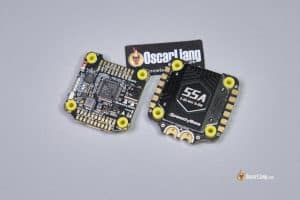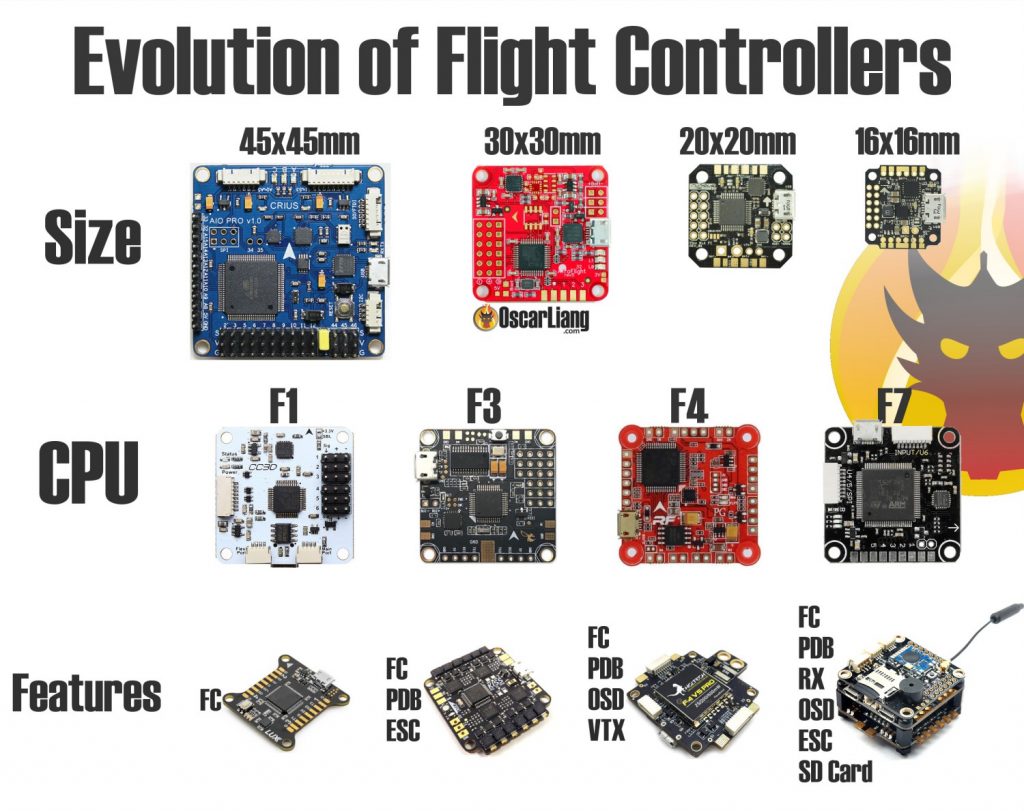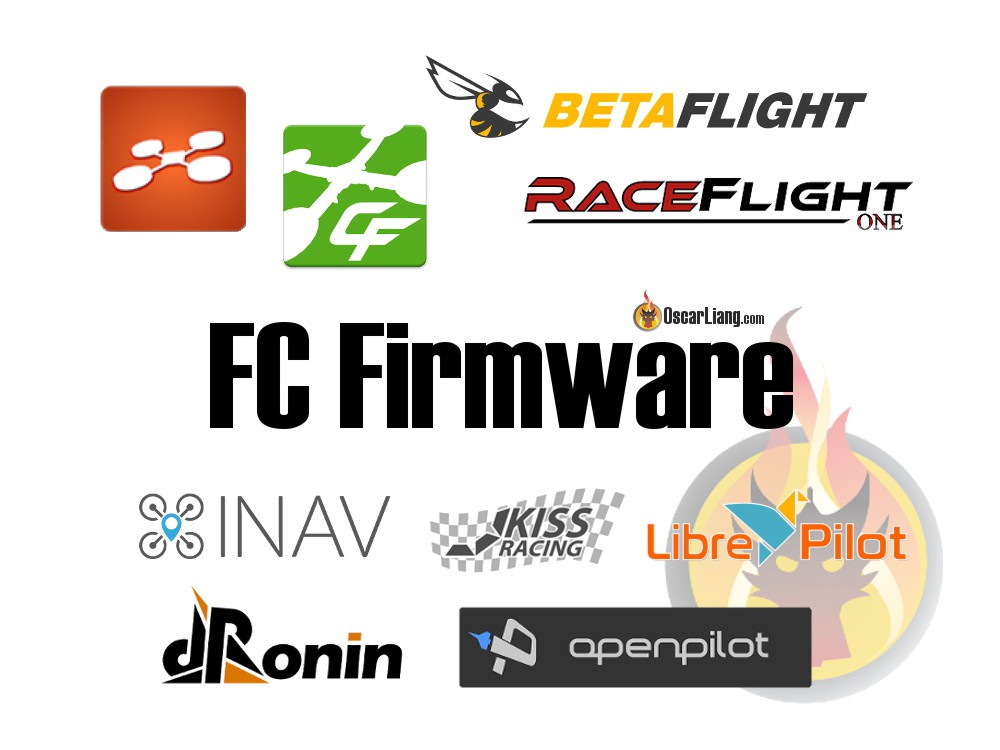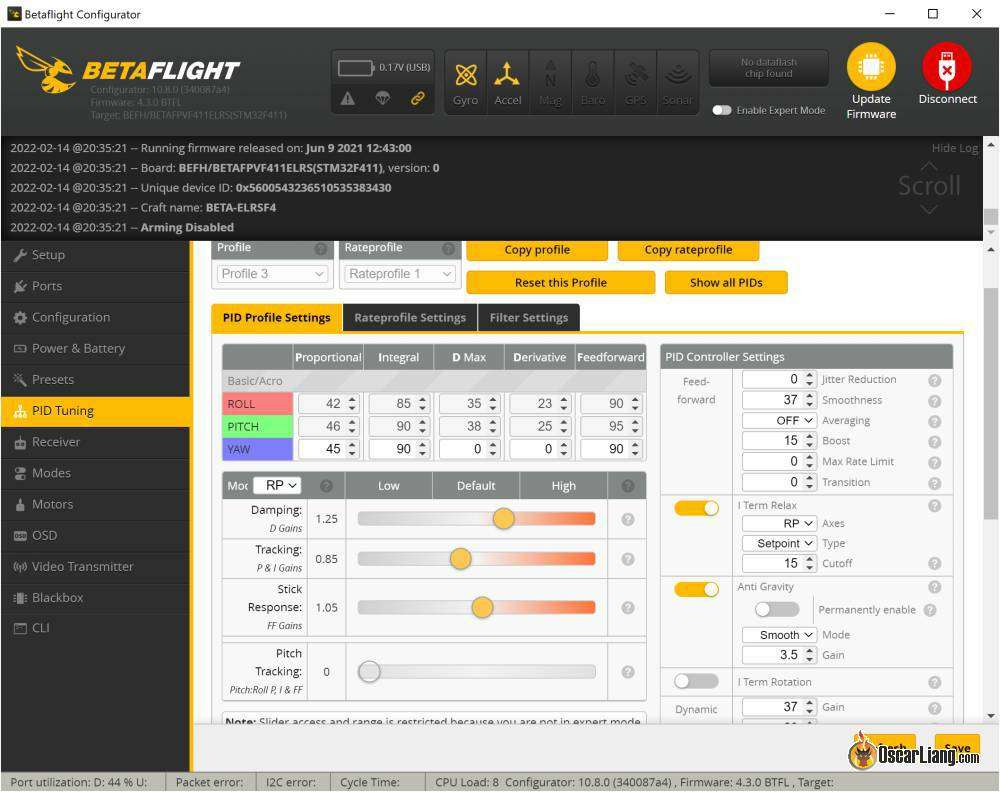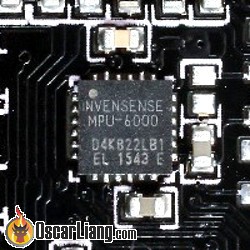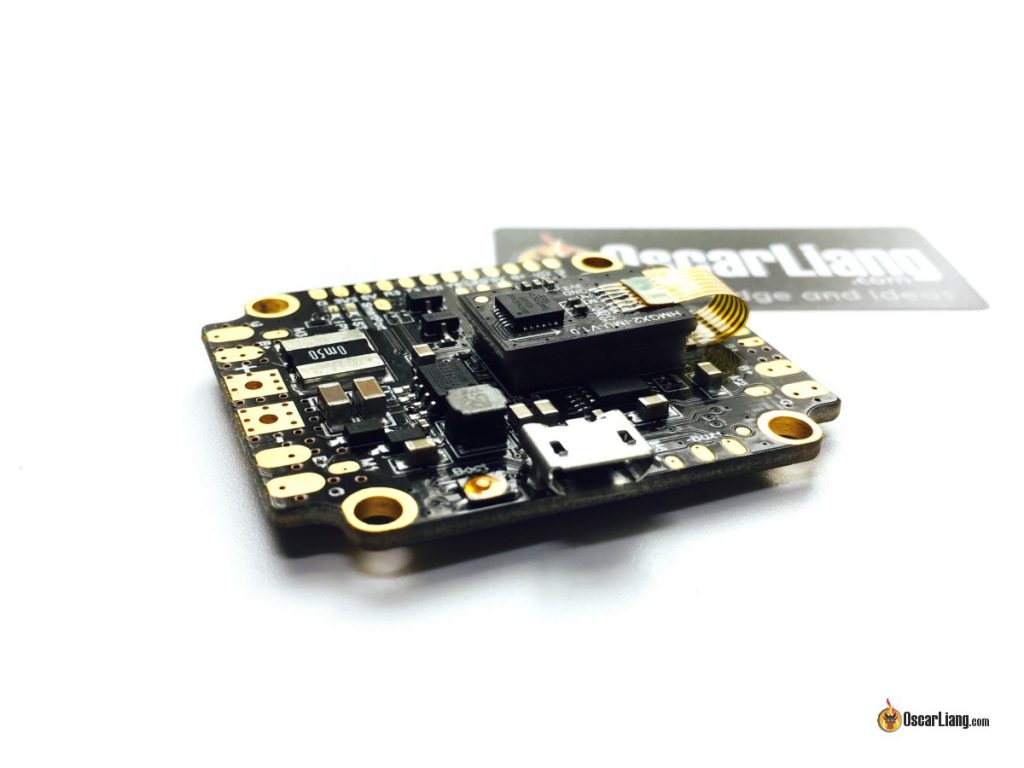[ad_1]
34.2K
A flight controller is likely one of the most necessary elements in a FPV drone. It’s accountable for stabilizing the plane, making certain exact flight manoeuvres, and offering knowledge to the pilot. On this article, we’ll clarify intimately what a flight controller is, the way it works, and why it’s such a crucial a part of any drone. Whether or not you’re a newbie or a seasoned pilot, understanding the fundamentals of flight controllers is essential for getting probably the most out of your flying expertise.
A number of the hyperlinks on this web page are affiliate hyperlinks. I obtain a fee (at no further value to you) for those who make a purchase order after clicking on certainly one of these affiliate hyperlinks. This helps assist the free content material for the neighborhood on this web site. Please learn our Affiliate Hyperlink Coverage for extra data.
If you’re new to the pastime, take a look at our FPV drones rookies information to be taught extra.
The Finest FC Suggestions
Speedybee F405 V4
The Speedybee F405 V4 is at present among the finest worth flight controller stacks out there, providing first rate high quality and efficiency. It contains practically all the fashionable options you’d need in a flight controller. It helps an analog FPV system with an onboard Betaflight OSD chip and is “plug n play” appropriate with digital FPV programs. See my full overview right here: https://oscarliang.com/speedybee-f405-v4/.
I’ve been virtually completely utilizing this stack for my 5″ and seven″ builds prior to now yr as a result of it’s inexpensive and appropriate for freestyle, racing, long-range, and cinematic flying. Whereas there are different funds FC stacks in the marketplace, they usually use the F722 chip, which has solely half the reminiscence of the F405 within the Speedybee. Much less reminiscence restricts the variety of options you should utilize in Betaflight and makes the system much less future-proof.
Get your Speedybee F405 V4 Stack from:
Speedybee: https://oscarliang.com/product-wncw
RDQ: https://oscarliang.com/product-6ro8
NBD: https://oscarliang.com/product-tscf
AliExpress: https://s.click on.aliexpress.com/e/_DFU9NkF
Amazon: https://amzn.to/46EzYZi
iFlight Beast F7 AIO 55A
For light-weight builds with a low profile, akin to ultra-light 5″, 4″, and three.5″ drones, the iFlight Beast with a 25.5×25.5mm mounting is a strong selection. It’s notably appropriate for racing as a consequence of its light-weight and compact design. Though the 55A ESC ranking may sound “bulletproof”, it’s necessary to do not forget that that is nonetheless an AIO board and never as strong as ESC on a separate board. Nonetheless, it’s greater than enough for any drone smaller than 5″. This flight controller presents all of the connections and performance you may need in a Betaflight flight controller.
Get the iFlight Beast 55A FC from:
AliExpress: https://s.click on.aliexpress.com/e/_DlhSn6R
GetFPV: https://oscarliang.com/product-e7xk
RDQ: https://oscarliang.com/product-pdc0
Flywoo GOKU GN745
The GOKU GN745 is an nice various to the iFlight Beast. It additionally includes a 25.5×25.5mm type issue, making it superb for light-weight 3″, 4″, and 5″ FPV drone builds. Geared up with an F7 processor and BLHeli32 ESC, it helps bidirectional DSHOT and RPM filtering proper out of the field, together with different superior BLHeli32 options.
It’s arguably one of the crucial feature-rich whoop/toothpick model flight controllers out there. Though there are a lot of solder pads situated on the sting of the board, they’re fairly small and will be difficult to solder. Nonetheless, the board does provide 7 full UARTs, and its set of options is unmatched. It features a barometer, a 5V and 9V BEC, and even boasts 8MB of blackbox reminiscence on board!
Product Web page:
Flywoo: https://oscarliang.com/product-bgbk
GetFPV: https://oscarliang.com/product-1f9n
RDQ: https://oscarliang.com/product-4zy4
AliExpress: https://s.click on.aliexpress.com/e/_DCBmtpd
Flight Controller: What it’s and The way it Works
A flight controller, or “FC”, is the mind of an FPV drone. It’s a circuit board outfitted with sensors that detect the drone’s actions and person instructions. With this data, the FC adjusts the velocity of the motors to maneuver the drone within the desired path.
All flight controllers have primary sensors like gyroscope and accelerometer, whereas some even embrace non-obligatory sensors akin to barometric strain sensors (barometer) and compasses (magnetometer) to assist in autonomous flights.
The FC may also function a hub for different drone peripherals (exterior elements) like ESC, GPS, LED, servos, radio receiver FPV digital camera and VTX.
FC Varieties
There are two predominant forms of flight controllers: one is extra plane-oriented, whereas the opposite is extra multirotor-oriented. This doesn’t imply you’ll be able to’t use a airplane FC on a multirotor or vice versa, however you’ll doubtless face extra challenges. It’s finest to decide on the proper sort of FC for a smoother expertise.
| Airplane/Wing Oriented FC | Multirotor Oriented FC/ESC Stack |
 |  |
Throughout the multirotor FC, you’ll discover common FC and AIO (All-in-One) FC.
An AIO FC integrates the ESC onto the identical board, which makes for a compact setup. Nonetheless, they aren’t as strong as ESCs on separate boards, as present in common FC/ESC stacks (two separate boards), as a result of they’ve to make use of smaller FET’s and there’s much less warmth dissipation as a consequence of house limitation. Study extra about ESC on this information: https://oscarliang.com/esc/
The selection is determined by your necessities—if house and weight are priorities, you most likely need to go together with an AIO FC. In any other case, an everyday FC/ESC stack is generally most popular for its reliability.
| Common FC/ESC Stack (2 boards) | AIO FC (1 board) |
 |  |
FC Connection
Right here is an instance wiring diagram how elements in a FPV drone are related to the flight controller. Every FC has a unique wiring diagram as a consequence of variations in solder pad layouts, however the idea stays the identical—you simply have to establish the suitable pads in your FC.
Flight Controller Firmware
Relating to flight controllers, you could have a selection not solely in {hardware} but additionally in firmware. Totally different firmware choices provide completely different options and specializations for numerous purposes. For instance, iNav is designed with GPS and autonomous flight in thoughts, whereas Betaflight is extra targeted on flight efficiency.
Listed below are a record of in style FC firmware choices for FPV drones: https://oscarliang.com/fc-firmware/
Nonetheless, I’d personally advocate selecting between these two:
- Betaflight: This open-source firmware focuses on flight efficiency. It has the most important person base, which makes beginning out simpler as a result of abundance of tutorials. It additionally means assist is available whenever you encounter points. Moreover, Betaflight helps the widest vary of flight controllers. Right here’s a tutorial to get you began: https://oscarliang.com/betaflight-firmware-setup/
- iNav: If you’re extra concerned with automated flying and GPS waypoint mission, iNav is the best way to go.
When you’ve chosen your firmware, you’ll be able to then search for a appropriate flight controller board.
Configuration and Tuning
Flight controller firmware will be configured utilizing a pc, smartphone, or radio controller. Every firmware has its personal person interface (UI) and parameters that may be modified. Nonetheless, even similar-looking UIs can produce completely different flight traits relying on the firmware, so it takes time to be taught and alter to a brand new one.
“Tuning” is the time period we use within the pastime to explain the method of adjusting parameters like PID, charges/expo, and others to attain desired flight traits. This is a vital step in optimizing your FPV drone’s efficiency and getting probably the most out of your flight controller. I’ve a tutorial on tips on how to tune your FPV drone in a couple of easy steps.
Processor
A flight controller makes use of microcontroller items (MCUs) to retailer firmware codes and carry out advanced calculations.
Presently, STM32 MCUs akin to F4, F7, and H7 are supported by Betaflight, whereas F1 and F3 are now not supported as a consequence of inadequate reminiscence for the increasing firmware necessities. Subsequently, it’s necessary to concentrate to the reminiscence out there on completely different processors – it’s simply as necessary as velocity, if no more. As an illustration, though the newest Betaflight means that you can choose which options to make use of and maintain the code dimension small for processors with much less reminiscence, in the long term, the slower F405 may even have a bonus over the sooner F722 as a consequence of its bigger reminiscence capability.
| F1 | F3 | F4 | F7 | H7 | |
| Velocity | 72MHz | 72MHz | 168MHz | 216MHz | 480MHz |
| Reminiscence | 128KB | 256KB | 512KB/1MB | 512KB/1MB | 1MB/2MB |
This text gives a extra detailed rationalization of the variations between all of the MCU for a greater understanding of FC processors: https://oscarliang.com/f1-f3-f4-flight-controller/
Traditionally, STM32 chips have dominated the FPV drone flight controller market. Nonetheless, lately, AT32 is shortly turning into a viable various to STM32 chips as a consequence of its availability and affordability. Study extra right here: https://oscarliang.com/at32-flight-controllers/
Gyro
The flight controller on an FPV drone makes use of a spread of sensors to detect motion and orientation. The primary sensor used for this objective known as an Inertial Measurement Unit (IMU). An IMU incorporates each an accelerometer and a gyroscope, however within the pastime, the time period “gyro” is usually used to discuss with the IMU sensor.
The gyro can measure angular velocity whereas the accelerometer measures linear acceleration. When flying an FPV drone in full guide mode (aka acro mode), it makes use of solely the Gyro, whereas in self stage modes akin to Angle mode, it requires each the Gyro and Accelerometer to work.
Gyro Overview
The most well-liked forms of gyro for FPV drone FCs are made by two producers: InvenSense (now a part of TDK) and Bosch Sensortec.
Right here’s an inventory of frequent gyro fashions, together with the communication protocols they assist and their most efficient sampling frequency:
| IMU | Potential Communication Protocol (BUS) | Max. Efficient Gyro Sampling Frequency |
| MPU6000 | SPI, i2c | 8KHz |
| MPU6050 | i2c | 4KHz |
| MPU6500 | SPI, i2c | 32KHz |
| MPU9150* | i2c | 4KHz |
| MPU9250* | SPI, i2c | 32KHz |
| ICM20602 | SPI, i2c | 32KHz |
| ICM20608 | SPI, i2c | 32KHz |
| ICM20689 | SPI, i2c | 32KHz |
| ICM42688P | SPI, i2c | 32KHz |
| BMI270 | SPI, i2c | 6.4KHz |
* MPU9150 is successfully MPU6050 with an built-in AK8975 magnetometer, whereas MPU9250 is MPU6500 with the identical magnetometer
There are two forms of communication between the gyro and processor: SPI and i2c. SPI is the popular communication protocol between the IMU and processor as a result of it permits for a a lot greater gyro refresh price than I2C (which has a restrict of 4KHz). Virtually all fashionable FCs immediately use SPI connection for the gyro. We need to keep away from MPU6050 and 9150 as a result of they solely assist i2c and never SPI.
The best way to Discover Out What Gyro FC Is Utilizing
To seek out out which gyro your FC has you will discover the IMU mannequin quantity printed on the chip, for instance that is the favored Invensense MPU-6000.
Or you’ll be able to enter the “standing” command within the Betaflight Configurator CLI and search for the title of the IMU beneath Gyro/ACC. Some FC could have multiple Gyro onboard, and you’ll select which one to make use of within the CLI with the command “set gyro_to_use=0 or 1”.
Which Gyro Is Finest?
Flight controllers don’t provide Gyro choices, however typically, for those who select a good model that features a gyro with monitor file, it shouldn’t pose any points. Right here’s a short historical past of gyros utilized in flight controllers.
The selection of gyro is determined by its max sampling price and susceptibility to electrical and mechanical noise. Earlier than 2022, probably the most extensively used gyro was MPU6000 due to its robustness in opposition to noise. The overall consensus is to keep away from MPU6500 and MPU9250 regardless of their greater sampling velocity. The ICM20689 can be a good gyro by way of efficiency however allegedly has a better failure price. The ICM20602 is one other in style selection, nevertheless it’s extra inclined to noise and more durable to tune. Since Betaflight 4.1 (Oct 2019), 32KHz gyro sampling price has been faraway from Betaflight, so there is no such thing as a benefit utilizing gyro with 32KHz sampling price.
In 2022, FC producers shifted from MPU6000 in direction of BMI270 as a consequence of value and availability. Whereas its max sampling frequency is simply 6.4KHz, Betaflight forces it to enter OSR4 mode (with a cutoff frequency of 300Hz), leading to a fair decrease sampling price of three.2KHz. Which may sound suboptimal, however as I’ve examined it myself personally, the precise efficiency of BMI270 is corresponding to MPU6000 (in Betaflight 4.3/4.4). The primary draw back might be the additional filtering that’s typically required because the cut-off frequency is greater within the built-in low move filter with the BMI270 gyro.
In 2023, increasingly producers are once more shifting from BMI270 to ICM42688P as a consequence of availability and value. The ICM-42688P Gyro has been the topic of debate as a consequence of perceived noise and tuning points. Nonetheless, investigations reveal that the gyro itself shouldn’t be the issue; slightly, it’s the design of the flight controllers it’s built-in into. Particularly, the gyro requires a clear energy provide for optimum efficiency, which was missed by some early FC designs in 2022 and early 2023, resulting in poor efficiency. For customers contemplating buying a flight controller that includes this gyro, thorough analysis into product critiques specializing in noise efficiency is essential.
Structure
FC format refers back to the association of pins and solder pads on a flight controller board, which may vastly have an effect on how straightforward it’s to attach numerous elements. Many individuals solely care in regards to the specs of a flight controller, and sometimes overlook the significance of the format.
As an illustration, evaluating the next two flight controllers, you’ll be able to see the primary one has a superior format with all of the pads grouped by operate and situated all the sides.
ESC Compatibility
4in1 ESC’s are sometimes offered along with flight controllers these days as a stack, and they’re designed to be plug and play.
Nonetheless, when utilizing ESC and FC from completely different manufacturers, whereas they need to be appropriate, the pinouts may be completely different, requiring rearrangement of the wires within the harness, which is usually a large trouble. If that is what you need to do, guarantee to double-check the pinout earlier than connecting the FC and ESC collectively, incorrect wiring might fry your FC upon powering up.
Solder Pads Defined
Right here, I’ll record a few of the necessary solder pads typically wanted on a flight controller and clarify what they imply.
Voltage Pads
VBAT, 3.3V, 5V, 9V
These pads are used to energy exterior units. VBAT is the direct voltage from the LiPo battery, whereas all different voltages are generally known as BEC (Battery Eliminating Circuit). Virtually all FCs have VBAT, 3.3V, and 5V pads; some bigger FCs provide different voltages akin to 9V and 12V to energy video transmitters. Word that every one BECs have an amp ranking, so keep away from overloading them to keep away from injury.
UART
UART (Common Asynchronous Receiver/Transmitter) is a very powerful connection on a flight controller. It’s a {hardware} serial port used to attach exterior elements akin to radio receivers, video transmitters, GPS, and many others.
Every UART has two pins: one for transmitting knowledge (TX pin) and one for receiving knowledge (RX pin). It’s necessary to do not forget that the TX on the peripheral system connects to the RX on the FC, and vice versa. You need to join TX and RX of the identical quantity for a tool. Some units solely require connecting both TX or RX if two-way communication isn’t wanted.
As proven within the following instance, UART3 (R3 and T3 pins) and UART6 (R6 and T6 pins) on a flight controller will be assigned completely different duties within the ports tab of the Betaflight configurator.
Flight controllers have a restricted variety of UARTs; some have as much as 6, whereas smaller FC’s could solely have 2. It is determined by the processor and house out there. Guarantee there are sufficient UARTs for the units you propose to make use of earlier than buying.
If you happen to want extra UART ports, Betaflight has a function known as SoftSerial, which converts sure solder pads into “digital serial ports.” These are much like UARTs however have a a lot slower replace price, making them unsuitable for time-critical purposes akin to receivers and GPS. They can be utilized for analog VTX management but additionally enhance CPU load, making them not really useful for slower processors otherwise you may have to decrease the PID Loop Frequency.
Digital camera Pad
Vin or Cam
If you happen to run analog FPV system, that is the place you join the FPV digital camera. The flight controller will then overlay the OSD to the video feed earlier than it outputs it to the VTX.
VTX Pad
Vout or VTX
That is the place you join the VTX for those who run an analog FPV system.
i2C Pads
SDA and SCL
For connecting units like a GPS compass and barometer.
Buzzer Pads
BZ+ and BZ-.
For beepers.
LED Pad
For connecting RGB LED strips.
Mounting Sample
The mounting sample refers back to the distance between the adjoining mounting holes on a flight controller. Frequent patterns embrace 30.5×30.5mm, 25.5×25.5mm, 20×20mm, and 16×16mm.
For five″ FPV drones or bigger, FC with 30.5×30.5mm mounting sample is usually used, whereas smaller drones typically use 25.5×25.5mm or 20×20mm.
Different Options
Flight controllers include a spread of options that may improve your flying expertise. Let’s check out a few of them.
Blackbox
Blackbox is beneficial for tuning and troubleshooting. You possibly can file your flight knowledge in two methods – utilizing built-in flash reminiscence or storing it on an SD card if there’s an onboard SD card logger.
I’ve a tutorial explaining tips on how to use Blackbox: https://oscarliang.com/blackbox/.
Flash reminiscence is cheaper however has restricted storage capability, usually 16MB which presents round 5 to 10 minutes of flight knowledge. Downloading knowledge from it can be sluggish. Utilizing an SD card reader in your flight controller, you’ll be able to maintain recording all yr lengthy with out emptying the storage, and it offers you entry to the logs immediately by inserting the SD card in a card reader.
Blackbox logs is a must have for skilled pilots. It offers you the flexibility to squeeze each little bit of efficiency out of the drone and diagnose points intimately. I’ve a tutorial explaining tips on how to tune your FPV drone: https://oscarliang.com/pid-filter-tuning-blackbox/
In case your flight controller doesn’t have an SD card slot or flash reminiscence, you can even join an exterior SD card reader to the FC by way of UART.
Connector Varieties
The three predominant forms of connectors on a flight controller are
- Plastic JST connectors
- Solder pads
- By means of holes
Plastic connectors are much less sturdy however handy to make use of, whereas solder pads are extra strong however requires soldering. By means of holes provide the possibility of direct soldering or utilizing header pins.
BEC
BEC (battery eliminator circuit) is simply what we name voltage regulators on a flight controller.
Virtually all flight controllers have a 5V BEC for powering radio receiver, GPS and many others, whereas some additionally provide 9V or 12V BEC devoted for powering the video transmitter. Though you’ll be able to energy FPV gear immediately from the LiPo battery, powering them from a regulated energy supply can produce higher outcomes.
Study tips on how to wire analogue FPV setup for finest consequence.
It’s necessary to decide on the fitting voltage supply based mostly on the system you’re powering. Some units will be powered immediately from the LiPo battery e.g. the video transmitter. Nonetheless the facility supply from LiPo tends to be noisy, voltage spikes may even injury your units if there isn’t sufficient filtering. A BEC acts as an influence filter and is often a greater energy supply, however you’ll want to examine if it meets the voltage and present necessities of your system.
Barometer
Having a barometer constructed into your flight controller could make GPS-assisted flight extra correct (akin to GPS Rescue Mode), but it surely’s not necessary.
OSD Chip
For analog FPV system, make certain your flight controller has an OSD chip (AT7456E) out there, or Betaflight OSD gained’t work. Nonetheless, it’s not crucial for digital FPV programs akin to DJI, HDZero and Walksnail, all they want for OSD to work is only a spare UART .
Comfortable Mounting
Comfortable mounting the flight controller is essential for optimum efficiency, it reduces the noise/vibration from the body attending to the gyro.
Virtually all FC nowadays have M4 holes, which let you insert rubber gummies (grommets) so you should utilize M3 {hardware} to safe the board in a body.
There are FC with the Gyro “smooth mounted” on a chunk of froth for decreasing vibrations attending to the gyro. This isn’t a very talked-about strategy, because it’s been confirmed pointless so long as the flight controller itself is satisfactorily soft-mounted. Listed below are some recommendations on soft-mounting and filtering capacitors to scale back noise.
A Little Historical past
The historical past of FPV drone flight controller will be traced again to 2009, when a maker used the Wii Movement Plus Accent with an Arduino board to regulate a drone. This led to the event of the Multiwii mission, which ultimately created its personal flight controller board that labored on an 8-bit Atmel processor.
In 2013, one other developer named “timecop” created a flight controller board with an ARM 32-bit processor, Naze32, and ported the Multiwii supply code to it, known as “Baseflight.” This board established the 35x35mm type issue (with 30x30mm mounting) and remains to be related until today.
In 2014, “Hydra” modified Baseflight and created Cleanflight, resulting in an explosion within the 32-bit flight controller market, with producers growing their very own FC variants.
Betaflight was created in 2015 by “BorisB”, utilizing Cleanflight’s supply code and making vital modifications to it. When Betaflight was first launched, it was primarily targeted on enhancing the efficiency of Cleanflight, whereas additionally including new options and capabilities. Over time, Betaflight has diverged considerably from Cleanflight, and is now thought of a separate and distinct firmware. Betaflight is at present the most well-liked flight controller firmware for FPV drones, and remains to be being frequent up to date.
Edit Historical past
- 2014 – Article created
- 2016 – Added decisions of flight controller firmware, up to date FC options
- 2017 – Up to date Processor and Gyro sorts, Added “FC Evolution” infographics, Up to date MPU sorts
- 2018 – Up to date data about FC integration, Added data about mounting sample
- 2020 – URL Modified; Up to date: FC Firmware, Gyro Information; Added: connection diagram/instance, AIO FC & Function integrations defined, format, digital camera management
- 2022 – Added data about BMI270 gyro
- 2023 – Tutorial revised, Added data about ICM42688P Gyro
- Could 2024 – Up to date tutorial, added FC suggestions.
[ad_2]




